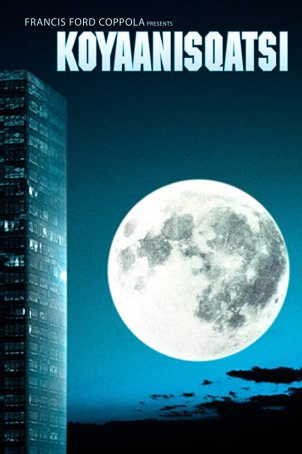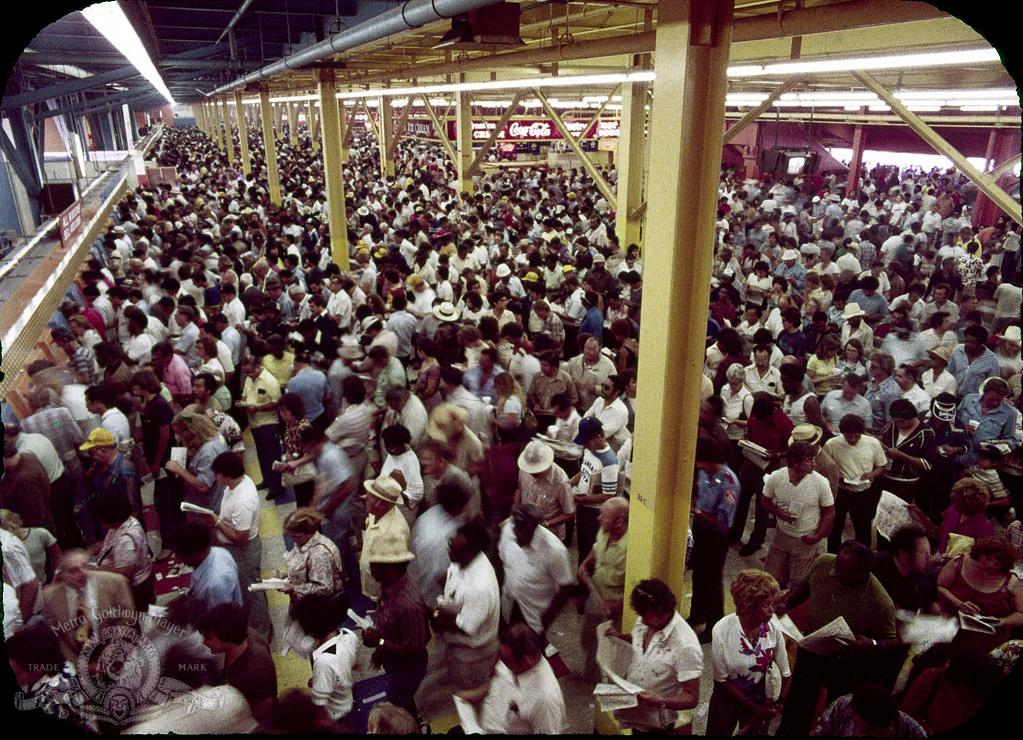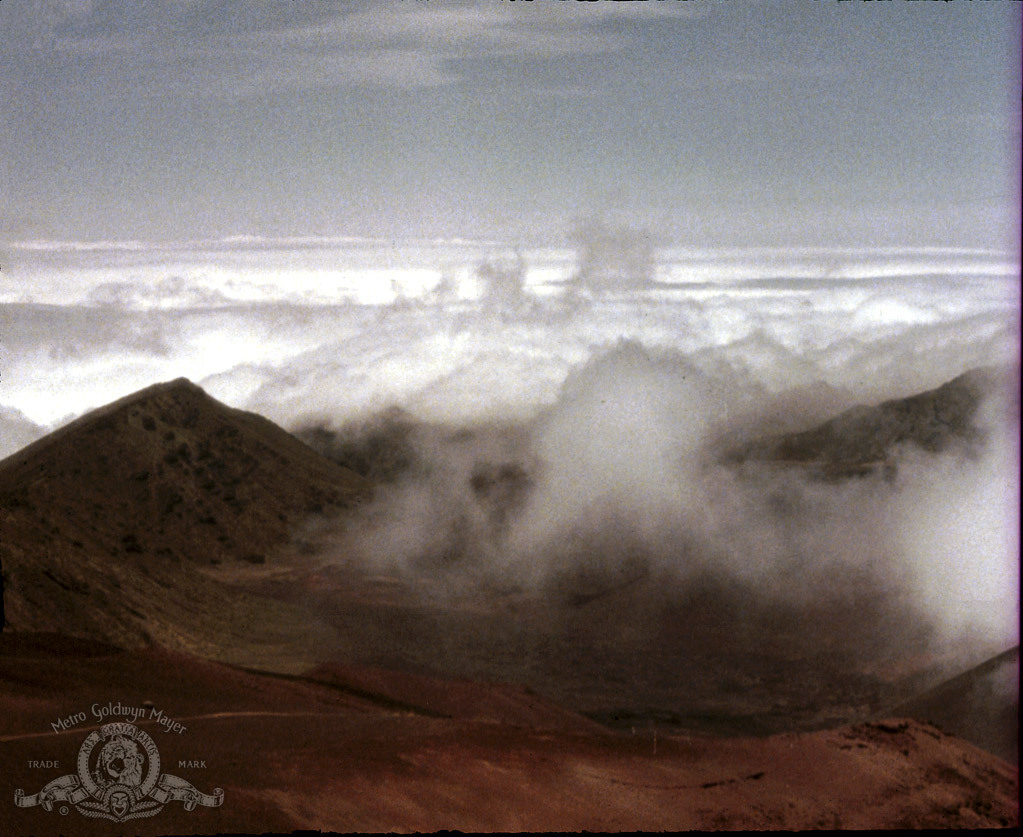Koyaanisqatsi (United States, 1982)
April 12, 2020
Koyaanisqatsi, Godfrey Reggio’s 1982 cult classic, is
almost hypnotic in the fascination it exerts. Merging a collage of images of
‘80s Americana with Philip Glass’ now-dated score (which bears more than a
passing resemblance to the film work of Vangelis, who was a hot property at the
time), the experimental movie is long enough to engage the imagination but not
too long to overstay its welcome. The film’s theme – that humanity is ruining
the planet – is sufficiently overt that even the most distracted viewer will
get the meaning.
Koyaanisqatsi is 100% non-narrative. It’s a little
like the nature documentaries that occasionally make it to the big screen but
without the artificial attempts at structure. Reggio’s production offers 86
minutes of uninterrupted images. There are no characters and there’s no story,
unless one considers the overriding theme of “desecration” to be one.
As is a filmmaker’s right, Reggio has stacked the deck to
support his thesis. To that end, we rarely see the destructive side of nature –
no hurricanes, tornadoes, volcanos, or similar natural disasters. Likewise, the
artistic and noble side of human endeavors are elided from the canvas. What we
get are postcard-worthy pictures of mountains, deserts, and canyons followed by
visual reminders of what humans sometimes do to pollute and alter the natural
scenery. Cityscapes are presented as cold and soulless – towering glass
structures reflecting the majesty of the clouds in the skies above. Time lapse
photography speeds up the activities of human beings, making them look like
insects scurrying about. The eye in the sky transforms New York City’s streets
into giant anthills or bee hives.
 Koyaanisqatsi was made in the 1980s and retains an
‘80s sensibility, even when depicting what should be timeless nature shots.
Philip Glass’ music, which at times becomes monotonous, is rooted in the era in
which it was written. However, to get a sense of how forcefully integrated
Glass’ contribution is, turn down the sound. It’s like watching a different
movie.
Koyaanisqatsi was made in the 1980s and retains an
‘80s sensibility, even when depicting what should be timeless nature shots.
Philip Glass’ music, which at times becomes monotonous, is rooted in the era in
which it was written. However, to get a sense of how forcefully integrated
Glass’ contribution is, turn down the sound. It’s like watching a different
movie.
Glass and Reggio would collaborate twice more; the three
films, with 1988’s Powaqqatsi and 2002’s Naqoyqatsi joining this
one, comprise the “Qatsi Trilogy” – but although critics were generally
kindly disposed toward the first film, they turned negative when considering
the later two installments. That makes Koyaanisqatsi a one-hit wonder.
It is sufficiently different from anything else available from a mainstream
distributor (MGM owns the current distribution rights) that it deserves to be
watched; the same cannot be said of the sequels, which are tired attempts to
mine similar territory with diminishing returns. If you’ve seen Koyaanisqatsi,
you have experienced the best that the Reggio/Glass pairing has to offer.
 Like any collage, the images work better when seen as a
whole than taken piecemeal. That being said, there are some arresting moments. Shots
of the giant skyscrapers, with clouds and sunlight reflecting off their glass
walls, are beautiful in their own way. The implosion of a housing project in
St. Louis evokes the same mixed emotions that any controlled demolition does.
Perhaps the most ominous of all Koyaanisqatsi’s visuals begins with a
simple shot of sunbathers relaxing on a beach. The camera then pans back to
reveal the cooling towers of a nuclear station in the background.
Like any collage, the images work better when seen as a
whole than taken piecemeal. That being said, there are some arresting moments. Shots
of the giant skyscrapers, with clouds and sunlight reflecting off their glass
walls, are beautiful in their own way. The implosion of a housing project in
St. Louis evokes the same mixed emotions that any controlled demolition does.
Perhaps the most ominous of all Koyaanisqatsi’s visuals begins with a
simple shot of sunbathers relaxing on a beach. The camera then pans back to
reveal the cooling towers of a nuclear station in the background.
Reggio has demurred when critics called Koyaanisqatsi a political film. Instead, he has claimed that each viewer will take away from the film a personal meaning or interpretation, much as is the case with a poem. He has also said that the movie isn’t intended to be about the effects of technology on people but that “It’s not that we use technology, we live technology.” Koyannisquati attempts to capture this visually but it’s understandable that some will believe the filmmakers have approached the project with a strongly pro-environmental/anti-industrial agenda. While it’s easy to dismiss Koyaanisqatsi on the basis of its simplistic message, the amazing visuals are worth seeing on their own merit.
Koyaanisqatsi (United States, 1982)
Cast:
Home Release Date: 2020-04-12
Screenplay: Ron Fricke and Godfrey Reggio and Michael Hoenig and Alton Walpole
Cinematography: Ron Fricke
Music: Philip Glass
U.S. Distributor: MGM
U.S. Release Date: 1983-09-14
MPAA Rating: "NR"
Genre: Documentary
Subtitles: none
Theatrical Aspect Ratio: 1.85:1

Comments